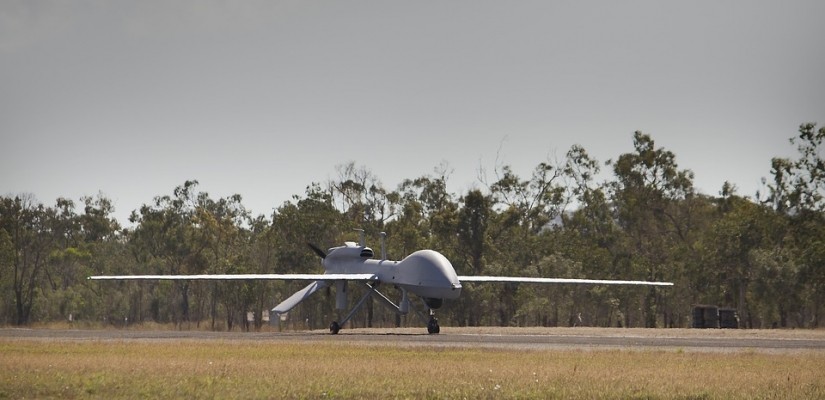
Statistics by the Bureau of Investigate Journalism recorded at least 329 confirmed drone strikes by the United States in Yemen, resulting in a total of 1,020-1,384 deaths between 2002 and May 2019. At least 174 of all victims were civilians. This data reveals that the use of drones in Yemen must not be taken lightly. The Yemeni Houthi militia has also turned toward drones as it resists Yemen’s President Abdrabbuh Mansur Hadi and the government’s coalition with Saudi Arabia, the United Arab Emirates, and the United States. The Houthis have become increasingly proficient in the utilization of drones, raising concerns about regional security. Drone technology is propelling the role of the Houthi militia in the war in Yemen to a new level.
Supported by technology and smuggled deliveries from Iran, the Houthi insurgency has moved from relatively simple drones with propellers for surveillance to larger drones that can fly more than 900 miles (1500 kilometers) at a speed of 150 mph (240 km/h). These drones can be used not only for reconnaissance but also for military strikes, which puts the Houthi’s enemies abroad — Saudi Arabia and the United Arab Emirates — at risk.
Originally a peaceful theological movement in the 1990s, the Houthis first engaged in violence in 2004 when conflict with the government broke out. The crisis reached its climax in 2014 when the Houthi insurgency revolted and demanded fuel subsidies, government accountability, and a withdrawal of U.S. influence from Yemen. Eventually, they drove the government out of Sanaa, the Yemeni capital, and took over North Yemen. In an attempt to halt the Houthis’ territorial expansion, the opposing coalition under Saudi Arabia began conducting air strikes in 2015 and subsequently incited a series of drone attacks by the Houthi rebels, whose signature drone is the Qasef-1, a copy of the Iranian Ababil-2. The vessel can be equipped with a 66-pound (30 kg) warhead.

Previous attempts at drone strikes by the Houthi militia include an alleged unsuccessful targeting of Dubai Airport in August 2018, a failed attack against Abha Airport in Saudi Arabia in May 2018, and a strike against a facility of Saudi Aramco, one of the biggest oil companies in the world, in April 2018. While many of these attempts were intercepted by rival forces, an attack on a military parade by the Yemeni government on January 10, 2019 lead to 7 deaths and the wounding of 11 participants. Further demonstrating the Houthi’s developing warfare capabilities, a drone strike targeted a Saudi oil pipeline west of Riyadh on May 14, 2019.
A look at international law sheds lights onto legal problems of drone attacks in Yemen. The Yemeni case can be classified as non-international armed conflict between the government and a non-state actor. International humanitarian law focuses mainly on international armed conflicts, but Additional Protocol II of the Geneva Convention of 1949 offers guidance on relevant legal practices in domestic wars. Article 13 of Additional Protocol II prescribes that the civilian population must be protected at all cost, a provision that is often disregarded in asymmetric warfare. Moreover, international law prohibits acts of aggression that are not proportional to military necessity. This means that strikes need to be targeted and must avoid excessive collateral damage.
Intimidated by the strength of government forces, militias often disregard such legal regulations and resort to aggressive tactics in order to balance out their weakness. Such practices carry somber implications for the future utilization of military drones. Precision strikes could progressively turn into signature strikes that rely more on the assumption of a target’s identity rather than on confirmed information. Such behavior puts civilians at risk and may claim innocent victims. Attempts to launch drone attacks on public airports also exemplify this risk.
After the attack on the military parade in January 2019, the Houthi militia announced a further proliferation of drone strikes. The rebels pointed out that they are aiming to launch simultaneous attacks in different locations, raising concern over whether Yemen will face a rampant drone war in the future. This scenario seems increasingly likely as drones can bring about destruction at low cost. Additionally, these unmanned flight vehicles can be deployed quickly and guarantee higher safety for the remotely stationed operator. These are great advantages for militias who do not have access to an extensive arsenal of military equipment and trained pilots like government forces. Considering that Yemen is one of the countries with the most frequent application of war drones worldwide, the Houthis’ increased focus on drone tactics adds to the crisis in Yemen.
